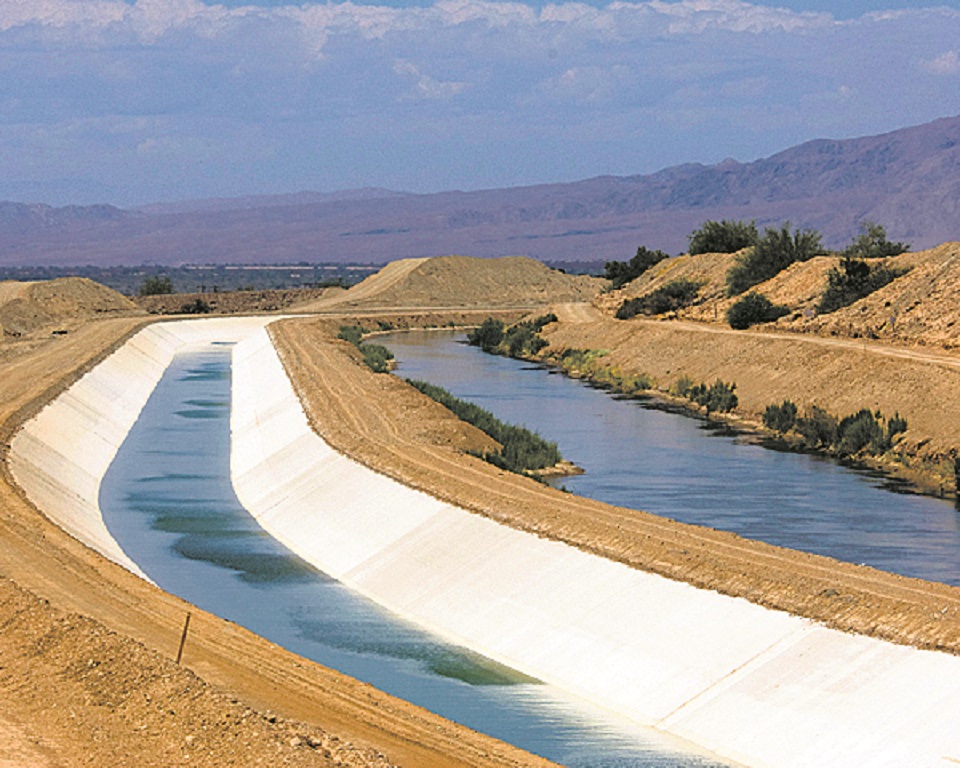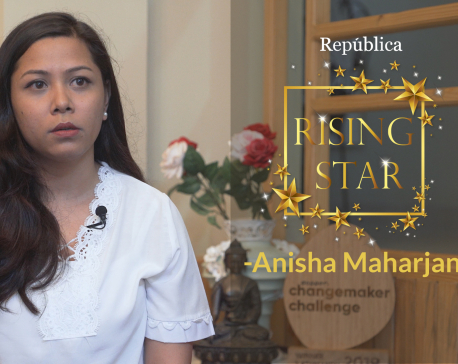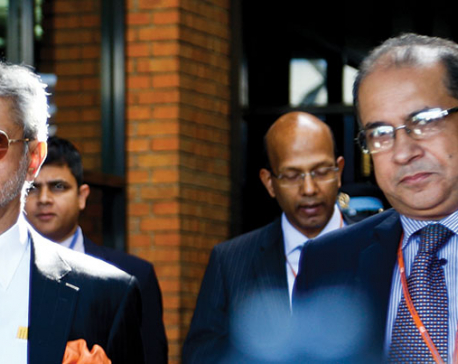
OR

Building Inter-country Water Supply Management System connecting Mechi and Mahakali rivers will help harness Nepal’s precious river resources
This write-up is about the vision—something we wish would happen but aren’t sure it would. Some visions are just daydreams but well-meaning nonetheless—looking ahead what could happen to our own fortunes, to the country, or the world. We may envision some weird stuff, like sending man to Mars and establish a colony. We may or may not believe this kind of thing but that doesn’t stop anyone from taking such leaps of thought and imagination. And, looking to our own possibilities, the late KP Bhattarai had promised to make Nepal a Singapore and, in not too distant future, flooding Kathmandu with abundant water from Melamchi.
As background to my own leap of imagination, I give credit to the celebrated economist of the 20th century John Maynard Keynes for the idea of writing about the possibilities for Nepal. The case in point is Keynes’ essay “Economic Possibilities for our Grandchildren”, which he wrote a century ago, in the late 1920s, in which he envisioned the economic future of mankind hundred years hence, in the 2020s.
Keynes foresaw the living standard in industrial world to improve fourfold to eightfold over what mankind had achieved in the past 200 years, since about the middle of the 1700.
It is 90 years now since Keynes made those predictions and he seems to be exactly on the dot in predicting that kind of economic future that his grandchildren will inherit. Per capita income level in the US and in many of the industrial countries is now almost six times higher in real terms compared to the level in the 1920s and will be marching on to almost hit Keynes’ top prediction of eightfold increase by 2030.
Possibilities for Nepal
We have very little of background from Nepal’s economic history to envisage anything long-term but we can work with the data on per capita income. How will this change over the next 100 years? Looking at the information we have, for 50 years of data on per capita income, this is much shorter than Keynes’ 100 years but quite long enough to base projections for the coming century—economic prosperity for Nepal in the early decades of the 22nd century.
Looking at the world at large, average per capita income in the world is expected to increase from about $6,000 now to between $25,000 and $50.000 in prosperous industrial countries. If Nepal’s economy performs at the level of average world economies, its per capita income will increase from about just under $1,000 now to $4,000 to $8,000 a century later, by 1.4 percent annual rate of growth in real terms which is about the same as over the past 50 to 60 years.
Government’s annual budgets and five-year plans customarily have given high priority to achieving five to six percent annual growth of the economy which, however, hasn’t happened. Actually, growth has hovered at two to four percent rate, with medium-term average of three percent. Discounting for population growth of one to two percent, real growth in per capita term has averaged less than two percent, hardly a number that could lead to economic prosperity anytime soon.
The low-growth scenario of the economy is reflected in the sources of growth factors which, basically, are land, labor, capital and technology, with the growth in their supply and improved quality as the main determinants of the economy’s overall growth. It is hard to envisage and justify that traditional growth factors are growing in any robust manner and also that the use of technology and capital remains low in key sectors of the economy such as agriculture, manufacturing, construction and transport. All these add up to the same old story about the economy’s performance: Per capita income to grow one to two percent annually over many years. .
Path for prosperous future
Repetition of the growth strategy practiced over the past several decades is unlikely to overcome the stalemate that the economy has faced over a long period of time. This makes a compelling case for approaching the growth and prosperity issues in a different way, in the form of a strategy that works as a shock therapy for rest of the economy and that the shock is large enough to lift the whole economy on the trajectory of high growth path.
There aren’t many options to choose from for the launching of such a transformative and visionary project. Nonetheless, we can stretch our imagination to conceive one wildly visionary venture, irrespective of how impossible that may look like now and though such a venture hasn’t been undertaken anywhere else.
This visionary project relates to the connecting of East-West ends of the country to help tame and harness the country’s precious resource—its rivers—using an inter-country canal system that would give us a total control over the rivers’ water-flows, in a large enough manner that would eliminate floods and famines from most parts of the country.
The outcome will be that it will provide relief to a majority of the country’s population that has faced such calamities for generations and centuries. Despite the decades of efforts to develop and diversify the economy, agriculture continues to be the main livelihood source for the country’s population. An effort to stabilize agricultural sector and improve its productivity will nourish the entire economy in a way no other sectors can.
This scheme—an Inter-country Water Supply Management System—will connect Mechi and Mahakali rivers through one single canal dug up at the edge of the hills that touch the plain regions of Madhesh to the south. The canal will provide an alternative route to connecting East-West ends of the country, much like the east-west road transport built in the 1960s. The difference between the two mega projects will be that the canal system will have a multi-purpose objective that will benefit the nation’s agriculture in a major way and also will help expand the transport system—both on land and over waterway—and we can also envision the growth of canal-based tourism.
Costs and resources
Of course, we can’t ignore the cost aspect of the venture which clearly looks impossible for a low-income country like Nepal for it would take resources of big size to take a project of such magnitude. Digging up of this mega-canal with transport capacity will present an engineering and ecological challenge, along with the mammoth resources needed for designing a controlled release and storage outlet for the excess water that will cost no less than the building of the canal itself.
For a system of 1,400 kilometer-long canal network with some 50 control-points at each of the major rivers and rivulets, this will present an impossible challenge even for a resourceful and larger country. We still can come up with an estimate—any reasonable estimate—to approach this size figure with, of course, a wide margin of error. We can start with a $200 billion as the total project cost, with allowance for 25 percent error on the up or downside. Which means the total cost of the project will range between $150 billion on the low side and $250 billion on the high side.
Such figures are really scary and bound to render the whole enterprise look outlandish, not fit for serious consideration. However, the one relief—and the major one—will be that the project could be spread over decades and may be a century. With a 30-year time period as the start up horizon, annual allocation at constant prices will likely be $5-7 billion, which is half the government’s annual budget and one-fifth of GDP.
It is not necessary that annual government budget accommodates the total of canal construction cost. With a convincing advocacy to international donor countries and organizations, more than half of this targeted amount can be raised. With credible pursuit of sound monetary and fiscal policy aimed at defending the exchange rate with the Indian rupee and a moderately incentivized interest rate together with equity offer backed by project’s revenue sources, this will harness sizeable sums of as much as 25 percent of the project cost.
The remaining 25 percent of project cost needs to come from the budget which could be affordable if corruption is reduced and the budget money gets saved by suspending or eliminating hundreds of small projects that give out no return to the national economy and used mostly for feeding corruption.
The author has worked as Senior Economist for IMF in Washington DC
You May Like This

Creating her own opportunity
Anisha Maharjan is the first winner of ‘Dopper Changemaker' that was held in 2019. Dopper Changemaker 2019 in Nepal was... Read More...

Time to enhance trust
The Indian External Affairs Minister Subramanyam Jaishankar is arriving in Kathmandu today to co-chair the fifth meeting of the Nepal-India... Read More...











Just In
- Nepal at high risk of Chandipura virus
- Japanese envoy calls on Minister Bhattarai, discusses further enhancing exchange through education between Japan and Nepal
- Heavy rainfall likely in Bagmati and Sudurpaschim provinces
- Bangladesh protest leaders taken from hospital by police
- Challenges Confronting the New Coalition
- NRB introduces cautiously flexible measures to address ongoing slowdown in various economic sectors
- Forced Covid-19 cremations: is it too late for redemption?
- NRB to provide collateral-free loans to foreign employment seekers








Leave A Comment